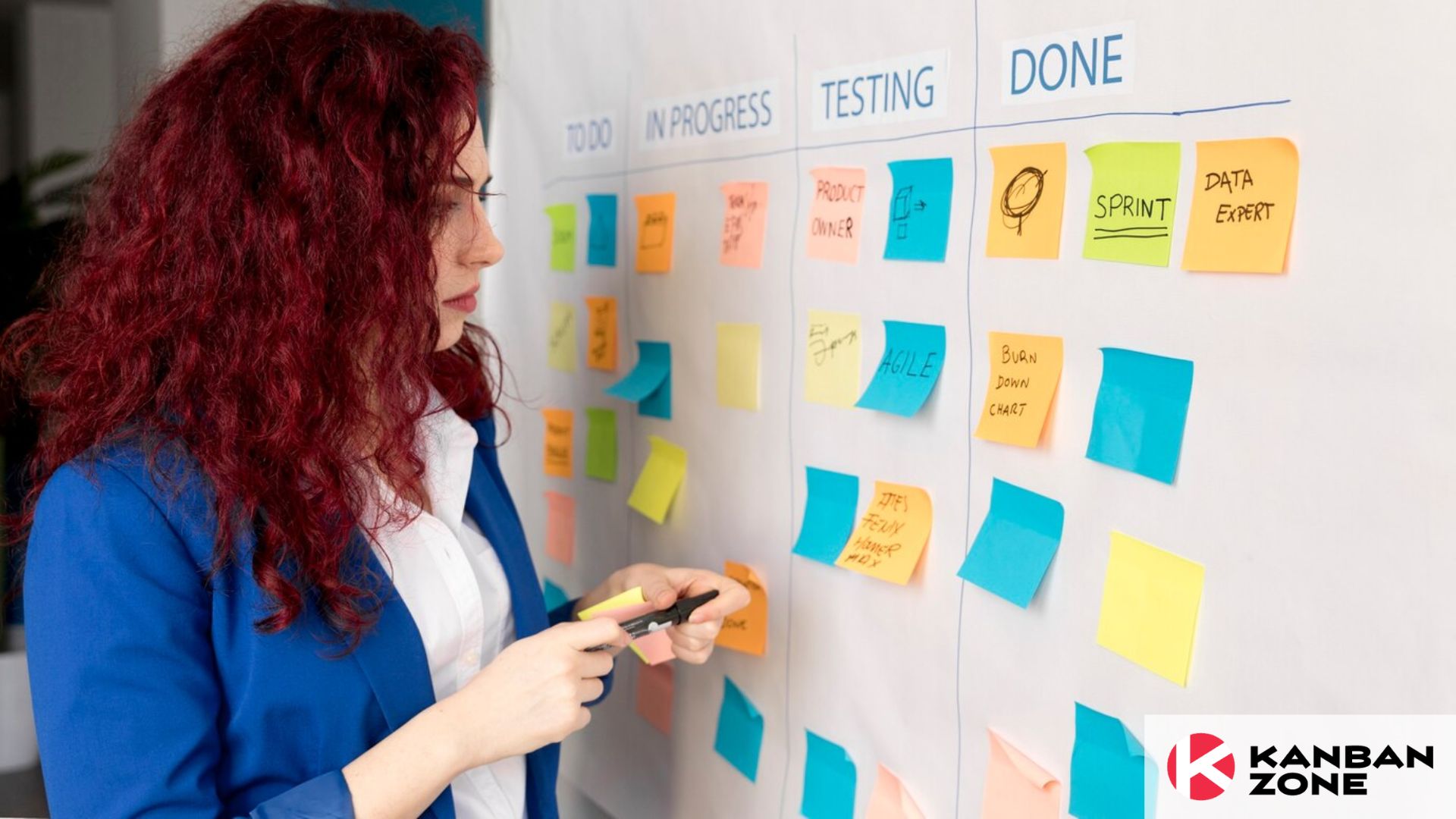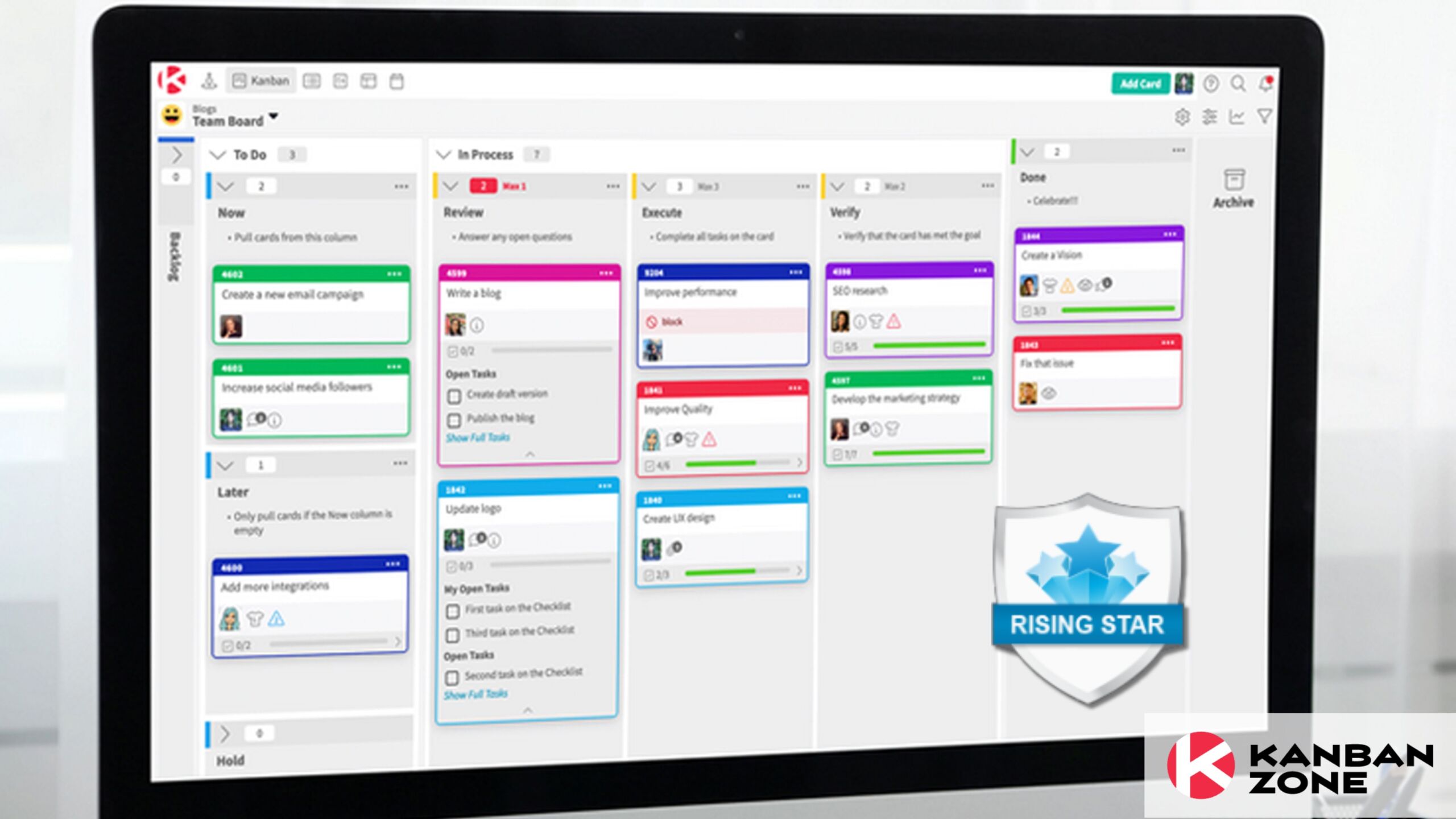
In startups, being fast and flexible is important, and since they usually have limited resources, managing projects well is crucial for success. Starting a business means more than just coming up with ideas and making plans; it also involves being ready to handle the unknowns and quick changes that come with the startup environment. If these challenges aren’t handled skillfully, they can easily cause projects to fail.
The main challenge is to find a project management method that offers enough organization to keep things on course but is also adaptable throughout your startup development process.
Kanban helps startups by providing a clear, live view of their work progress and any problems. This makes it easier to change direction when needed, decide what to do first, and keep a manageable amount of work.
1. Set Up Your Kanban Board
In setting up your Kanban system, the choice between a physical and a digital board is of the highest importance:
- For startups where collocated teams and hands-on collaboration are the norms, a physical board can be a focal point for daily stand-ups and impromptu discussions. It’s tangible, visually impactful, and fosters a shared sense of progress and challenges.
- Conversely, digital boards are indispensable for distributed teams or those requiring seamless integration with other digital project management tools. They offer scalability, advanced tracking capabilities, and the flexibility to adapt as your startup scales.
The decision hinges on your team’s working style, geographical distribution, and the complexity of the projects you handle.
Avoid the one-size-fits-all approach; instead, tailor your board to reflect your startup development process and workflow nuances. Start with essential columns like ‘Backlog’, ‘In Progress’, ‘Testing’, and ‘Done’, but be ready to tailor them.
For instance, if your app development process includes a rigorous QA phase, a dedicated ‘QA’ column might be necessary — the goal is to create a visual workflow that accurately represents every stage of your process.
This might mean adding columns for critical review stages, or creating sub-columns for different types of work within a single stage. Remember, the Kanban board is a living tool, evolving as your startup grows and changes.
2. Organize Your Startup’s Tasks
Efficient task organization in a startup begins with deconstructing large, complex ideas into manageable tasks. This breakdown basically transforms visionary concepts into actionable items.
Begin your startup development by identifying the core components of your project and then segment these into smaller, more specific tasks. It’s a strategic move that ensures each team member understands their role and responsibilities, enhancing focus and productivity.
Prioritization in startups is a dynamic, ongoing process, heavily influenced by shifting business goals and market demands. Techniques like MoSCoW (Must have, Should have, Could have, Won’t have) or simple High-Medium-Low categorizations can be effective; the key is to establish a clear understanding across your team of what needs immediate attention versus what can wait.
The efficacy of your Kanban system heavily relies on the clarity and detail of your task cards. Each card should succinctly yet comprehensively capture the essence of the task:
- Start with a clear, descriptive title that instantly conveys the task’s nature.
- Follow this with a detailed description that outlines the task objectives, any specific requirements, and potential challenges.
- Assigning due dates and responsible individuals on each card is critical for accountability and tracking.
These elements combined ensure that every team member has a precise understanding of what needs to be done, by whom, and by when, facilitating a smoother flow of tasks through the Kanban system.
3. Manage Workflow: Limit Work in Progress
Limiting work in progress (WIP) is crucial for maintaining high levels of efficiency and team morale throughout the startup development process. Restricting the number of tasks in progress at any given time encourages deep focus and expedited completion of tasks.
The WIP limits should be determined based on your team’s size, the complexity of tasks, and your overall workflow efficiency. A common approach is to start with a conservative limit and adjust as you gain insights into your team’s capabilities and the nature of the work.
Correctly set WIP limits prevent overcommitment and ensure a smooth, sustainable workflow — essential for maintaining momentum and avoiding bottlenecks in a fast-paced startup environment.
Identifying and resolving bottlenecks is a critical aspect of managing workflow in startups. Use your Kanban board to monitor the flow of tasks and spot areas where work is piling up; once a bottleneck is identified, investigate its root cause — be it resource constraints, unclear requirements, or external dependencies.
Addressing these issues promptly is crucial to maintaining the pace of work and project timelines. Regularly reviewing and adjusting your processes to mitigate bottlenecks ensures a smoother, more efficient workflow, aligning with the agile nature of startup operations.
4. Monitor and Improve the Development Process
Tracking key metrics such as task completion times and throughput rates is vital for understanding your team’s efficiency and productivity. These metrics provide insight into the health of your startup development process, highlighting areas where your team excels or where improvements are needed.
Regular review meetings are a cornerstone of continuous improvement in Kanban. Frequent retrospectives provide an opportunity to reflect on what’s working well and what needs to be adjusted. These sessions should encourage open, constructive dialogue, where the goal is to foster a culture of continuous learning and adaptation, ensuring that your development process evolves in tandem with the changing needs and goals of your startup.
Adaptability is a critical trait for startups — as your startup grows and evolves, so too should your Kanban system. Be prepared to modify your board layout, revise WIP limits, and adjust priorities to align with your evolving business objectives and team structure. This flexibility ensures that your Kanban system remains a relevant and effective tool for managing your projects.
Parting thoughts
Kanban enables startups to navigate the complexities of project management by providing a clear view of work progress, a focus on high-priority tasks, and encouraging a culture of continuous improvement.
The key to leveraging Kanban effectively in a startup lies in its adaptability. As your startup evolves, so too should your approach to Kanban. Staying flexible and responsive to these changes will ensure that Kanban continues to provide the structure and clarity needed to manage your projects efficiently, even as your startup grows.
This was a guest blog. Please review our guest blog disclaimer.
Learn to Work Smarter, Not Harder!
Get our top articles weekly.
Table Of Contents
Discover many more posts…







